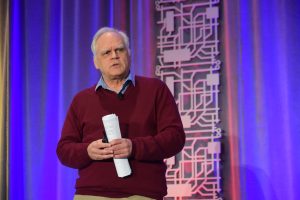It will be late April or early May before a new training facility for Sarnia’s Carpenters’ Local 1256 will be complete, but already the building offers chances for union members to hone their skills, says the project’s general contractor.
"That’s where a lot of the focus was put on," in planning the construction of the 14,000-square-feet building, says Anthony Iacovella, president of Dixin Construction Limited in Sarnia. The union envisioned a facility that would provide not only training space for workers after it was built but also training opportunities during the build.
That’s why the finishes are all components carpenters can do, Iacovella says.
In its 3,500 square feet office portion, for example, building materials include a cement reinforced panel system rather than brick, and wood rather than steel framing. In the hands-on training facility they are using an insulated panel system for the roof and walls.
The union awarded Dixin the tender mid-fall with the initial goal of having it complete before the end of the year.
Michael Bosher, senior project manager with MIG Engineering (2011) Ltd. in Sarnia, says the biggest challenge took place before crews even broke ground. (MIG is the project’s main consultant.) It involved the question of how to classify the training area under the Ontario Building Code.
"It’s not a warehouse, it’s not a storage facility, and it’s not a process or manufacturing facility, and that’s basically what makes up all of the category F, which is high, medium and low risk industrial establishments under the building code," he says.
So they had to demonstrate to the city’s building department that the building met the lowest risk-classification of industrial buildings. The classification sets the fire ratings for walls and separations.
Michael Bosher
MIG Engineering
Settling the question delayed building permits and pushed the start date to mid November.
Iacovella says construction has progressed smoothly since then.
"We’ve been very fortunate that the weather has been co-operative. If we would have had the winter that we had two years ago with all the snow, there’s no way we would be where we are right now."
Bob Schenck, the local’s co-ordinator, says the union developed its existing facility — across the street from the new build in Sarnia’s northeast end — about eight years ago and soon recognized it needed more space with different amenities to keep members current with new technologies.
"Especially with formwork."
The union also needed space to train members in new occupational health and safety training requirements, such as the new working at heights mandatory certification.
Schenck says the city’s industrial sector is experiencing a lot of expansion which in turn creates more need for training access. He pointed to TransAlta Corporation, which operates a cogeneration plant there and is developing the plant’s 268-acre property into a business park. Nova Chemicals Corporation and Imperial Oil Limited have also announced expansions.
"There’s always something in this area that’s for sure."
Sarnia’s large oil refining industrial sector also creates some unusual training expectations for the 855-member union.
"It’s mandatory for all our people to go through the scaffold course prior to working on scaffolding," says Schenck.
Union members also undergo fit tests, which involve learning how to fit half and full respiration facemasks that are used in the refineries.
Training for hoisting, rigging and forklift training are regular events.
To facilitate training needs, the building’s hands-on training section will house an overhead crane and have the ceiling room to form structures inside of up to 16 feet.
A 40-feet by 50-feet floor section in the 10,000-square-feet facility will remain open to grade to allow students to excavate trenches and do forms.
The office portion of the building, linked to the facility through a network of doors, will contain office space, cafeteria, a classroom and records storage.
Bosher says linking a classroom with an indoor training facility is something he hasn’t seen before.
"It’s a year-round facility where they can practice in site conditions without actually having to deal with frozen ground."




Recent Comments
comments for this post are closed